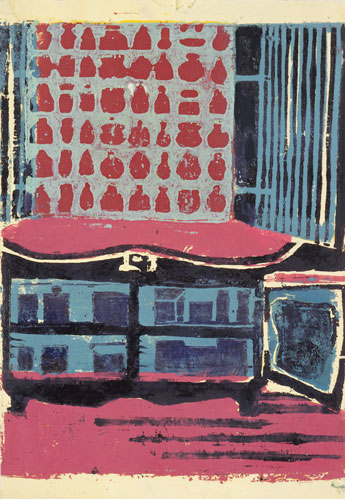Relief
Bourgeois made a relatively small number of relief prints, which is surprising given that the cutting and gouging inherent to the process might make them a natural choice for a sculptor. When she took up printmaking in the late 1930s, Bourgeois began with woodcut and linoleum cut, on which she experimented at home without the need for specialized equipment. Her early attempts are ambitious in their use of multiple colors, each requiring a separate block. Bourgeois later said she did not actually like the traces of wood grain that are often the distinctive and sought-after element of woodcuts.
Bourgeois also made isolated examples of stamped prints, and rubbings from surfaces she carved—both relief processes—but she never turned her attention fully to these techniques. Examples of relief prints from late in her career were the result of others suggesting she try the techniques for translating particular imagery from drawings. By this time Bourgeois was working with professional printers, and they often piqued her curiosity about the potential effects of one medium or another.
